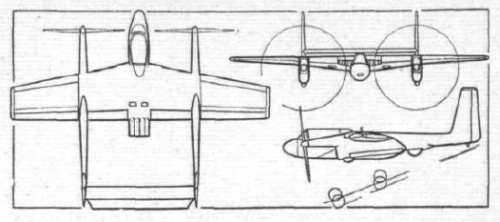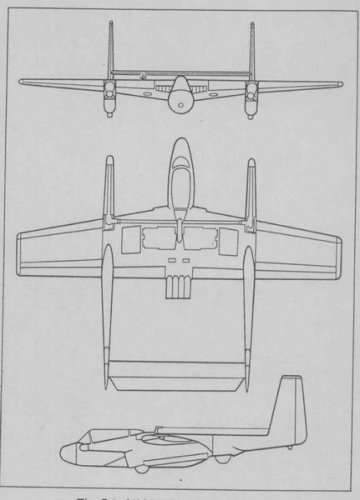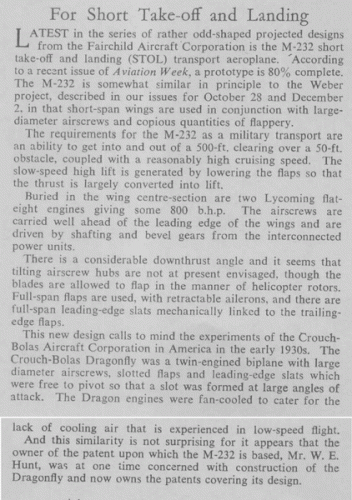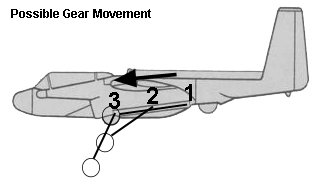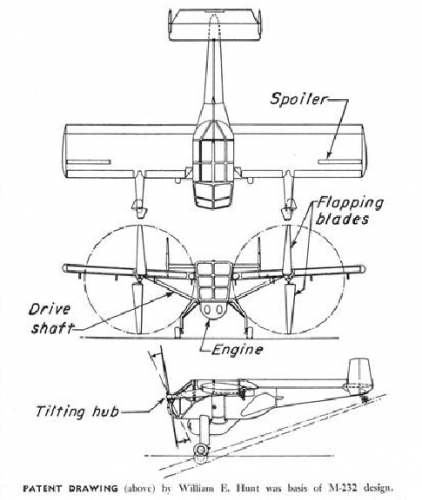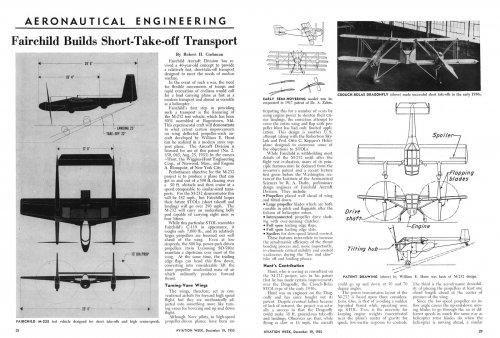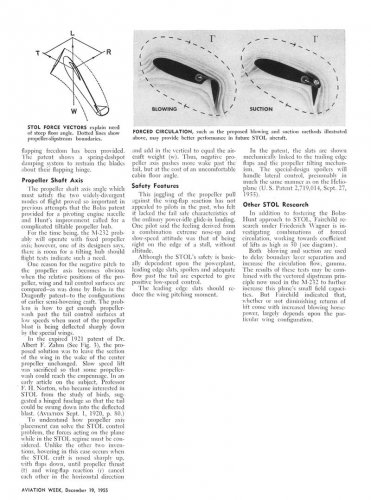- Joined
- 18 March 2008
- Messages
- 3,529
- Reaction score
- 983
Found while trolling through Google for STOL data. The Fairchild M-232 STOL test bed using the wing in slipstream technique of the Crouch-Bolas Dragonfly. Kind of a proto OV-10...
http://www.flightglobal.com/pdfarchive/view/1956/1956%20-%200005.html
Fairchild M-232 experimental short take-off and landing aircraft powered by two Lycoming SO-580 flat-eight piston engines driving airscrews through shafting:
Span, 39ft; length in flying position, 29ft 6in; length of nacelle, 18ft 4in; distance between centre lines of airscrews, 17ft; ground angle, 25 deg (landing) or 22 deg (take-off). Maximum weight, 7,000 Ib; accommodation, pilot plus passenger; also provision for belly nacelle accommodating eight men or four stretchers. Short-field requirement, to be able to use 500ft clearing with 50ft-high surround; cruising speed, 242 m.p.h.
http://www.flightglobal.com/pdfarchive/view/1956/1956%20-%200005.html
Fairchild M-232 experimental short take-off and landing aircraft powered by two Lycoming SO-580 flat-eight piston engines driving airscrews through shafting:
Span, 39ft; length in flying position, 29ft 6in; length of nacelle, 18ft 4in; distance between centre lines of airscrews, 17ft; ground angle, 25 deg (landing) or 22 deg (take-off). Maximum weight, 7,000 Ib; accommodation, pilot plus passenger; also provision for belly nacelle accommodating eight men or four stretchers. Short-field requirement, to be able to use 500ft clearing with 50ft-high surround; cruising speed, 242 m.p.h.

